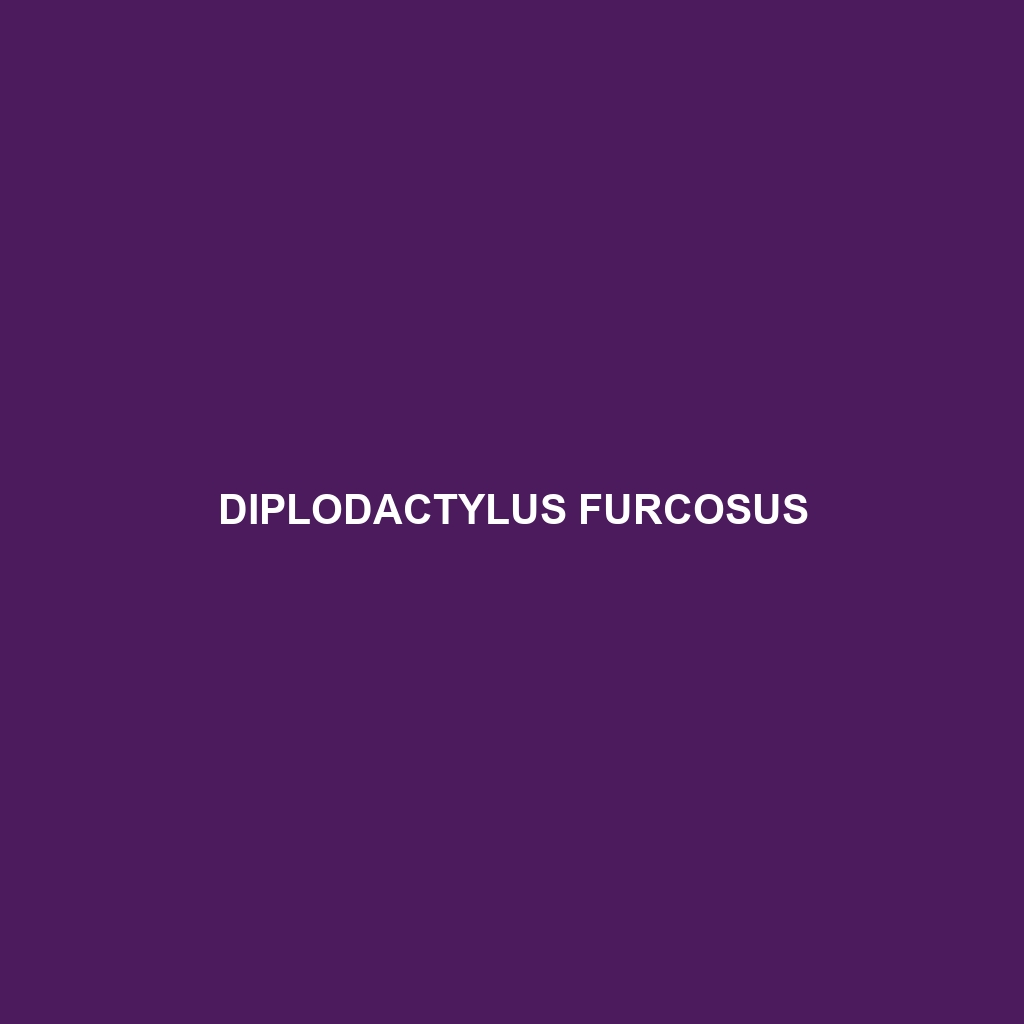Diplodactylus furcosus: A Comprehensive Species Description
Common Name: Diplodactylus furcosus
Scientific Name: Diplodactylus furcosus
Habitat
Diplodactylus furcosus is primarily found in the rocky outcrops and arid regions of Australia, particularly in the northeastern parts of the country. This gecko prefers habitats such as open woodlands, shrublands, and dry sclerophyll forests, where it can find shelter among crevices and beneath rocks. The warm, dry climate is essential for its survival, as it provides the necessary conditions for thermoregulation and hunting.
Physical Characteristics
Diplodactylus furcosus is a medium-sized gecko, reaching lengths of about 15 to 20 centimeters. It exhibits a robust body with distinct flattened limbs and a tail that can be autotomized when threatened. The coloration ranges from light tan to gray, adorned with dark brown or reddish spots, which aids in camouflage against the rocky terrain. Its eyes are large and have vertical pupils, enhancing its vision, particularly in low-light conditions.
Behavior
This gecko is primarily nocturnal, becoming active during the night when it hunts for prey. Diplodactylus furcosus is known for its arboreal tendencies, often climbing trees and shrubs to avoid ground predators. It is also territorial, with males displaying aggressive behaviors during mating seasons to fend off rivals. Their ability to blend into their surroundings makes them adept at evading predators, employing a mix of stillness and rapid movement when threatened.
Diet
Diplodactylus furcosus is an insectivorous species, feeding primarily on a diet of insects such as crickets, beetles, and moths. Additionally, it consumes small invertebrates, which constitute a significant part of its diet. This feeding habit not only helps control insect populations but also provides vital nutrients necessary for its growth and reproduction.
Reproduction
The breeding season for Diplodactylus furcosus typically occurs between spring and early summer. Females lay two eggs per clutch, often hiding them in crevices or under rocks to safeguard them from predators. The incubation period lasts about 60 to 90 days, after which baby geckos emerge fully formed but small in size, ready to fend for themselves shortly after hatching.
Conservation Status
Currently, Diplodactylus furcosus is classified as “Least Concern” by the IUCN Red List. However, habitat destruction and climate change pose potential threats to its populations, and conservation efforts are essential to ensure this species continues to thrive in its natural environment.
Interesting Facts
One notable fact about Diplodactylus furcosus is its ability to regenerate its tail after losing it as a defense mechanism, a trait common among many lizard species. Furthermore, its skin texture is rough and tough, preventing desiccation and offering resistance against predators.
Role in Ecosystem
Diplodactylus furcosus plays a crucial role in its ecosystem as both a predator and prey. By consuming various insects, it helps maintain ecological balance, while serving as a food source for larger predators such as birds and snakes. Its interactions contribute to the overall health of its environment, highlighting its importance in local biodiversity.
This HTML format presents a structured and SEO-optimized description of the species Diplodactylus furcosus, enhancing readability and engagement for online audiences.
